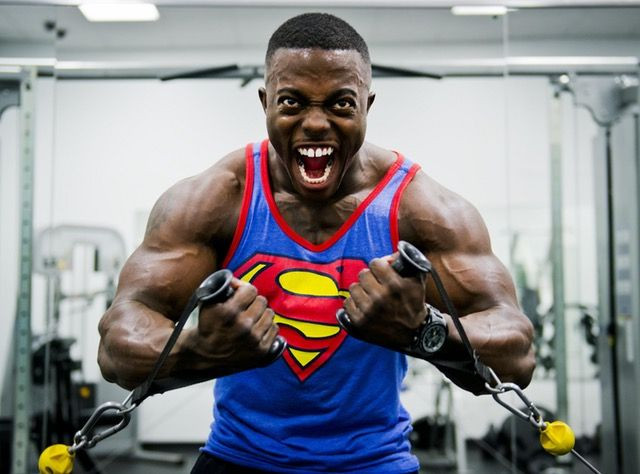Who Sweats More, Men Vs. Women? Body Size, Shape Influence Excessive Perspiration Levels

When we think of male hygiene, foul smells, excessive sweating, and awkward bodily noises come to mind. Meanwhile, the fairer sex is depicted as sweet-smelling, glowing, and poised. Now, a study published in Experimental Psychology has found it's our body shape and size that determine how much we sweat, not our gender.
"We found that these heat loss responses are, in fact, gender independent during exercise in conditions where the body can successfully regulate its temperature," said Sean Notley, lead author of the study, in a statement.
Read More: What Causes Some People To Sweat More Than Others?
Previous research has found women, even the fittest, don't sweat as much as men. Researchers noted fit men perspired the most, especially during more intense exercise, but they weren't using more sweat glands. The fit women had just as many glands active and pumping, although they produced less sweat from the glands.
Women took longer to become hotter before they began to sweat at full capacity. Difference in sweat rates has been linked to the circulation of sex hormones, where it’s believed testosterone levels boost sweating in men.
However, Notley and his colleagues believe it all has to do with the cooling method our bodies choose to use, not our gender.
Sweating is one of two ways the body cools itself down, according to the study. Perspiration cools the body when sweat evaporates from the skin. The second way is increasing the amount of blood flow to the skin. When warm blood flows near the surface of the skin, the heat can evaporate in the air.
Notley and his colleagues suggest it is the person's body shape and size that determines which of these two is dependent on heat loss.
In the study, smaller males and females were more dependent on increased skin blood flow for cooling than they were on sweating. Therefore, they were less likely to sweat. Meanwhile, those with larger bodies, whether they're on the taller or heavier side, tend to sweat more, because their body temperature may be higher than that of a smaller-size person.
Read More: Skin Infections and Constantly Changing Clothes Are Signs Of Excess Sweat
The researchers recruited 36 men and 24 women to measure their body temperatures, skin blood flow, and sweating responses while performing a series of exercises. Overall body size was calculated using a ratio of their total body surface to their body weight. The participants performed two trials — one of light exercise and the other of moderate — at 82.4 degrees Fahrenheit and 36 percent humidity. The body is able to mitigate the extra heat produced during exercise, and prevent further rises in body temperature by increasing sweating and blood flow to the skin.
The findings revealed the same body temperature changes were seen in all of the participants during each exercise, despite gender. This means men and women with similar surface-area-to-weight ratios used similar cooling methods. In other words, men and women with similar body size and shape experienced the same level of sweating.
Our responses to heat loss have nothing to do with our gender, and more to do with our body, and how it chooses to regulate its temperature, according to this new research.
Source: Notley SR, Park J, Tagami K et al. Variations in body morphology explain gender differences in thermoeffector function during compensable heat stress. Experimental Psychology. 2017.
See Also:
Read More: 5 Surprising Health Benefits Of Sweating That Actually Don't Stink
Use Of Deodorant and Antiperspirants Is Just A Social Construct



























